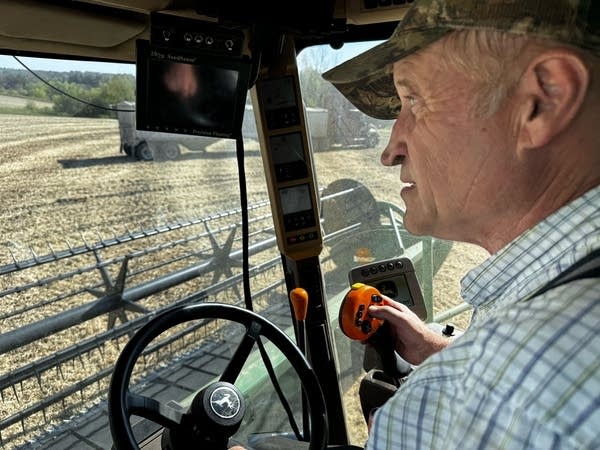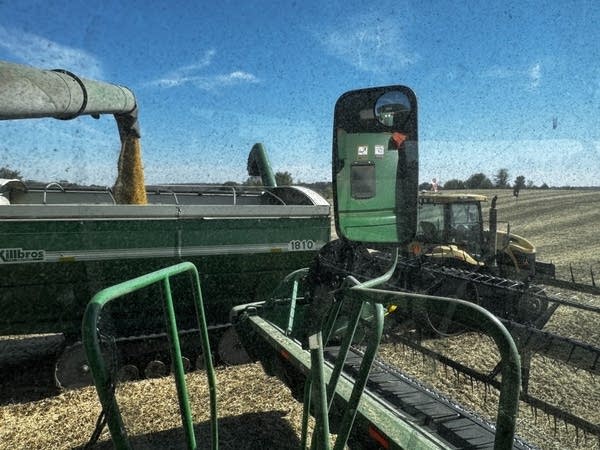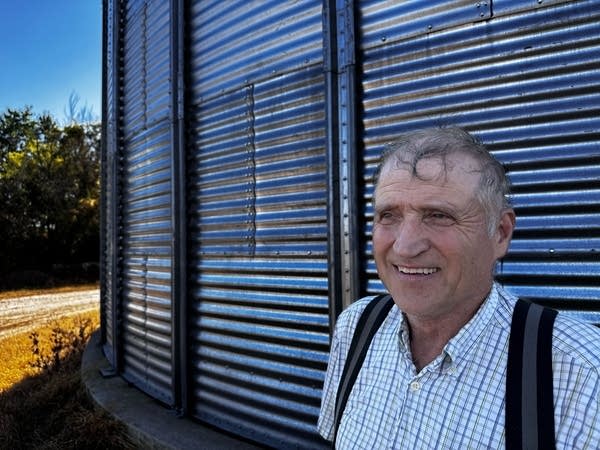President Donald Trump is expected to announce a significant bailout package to help farmers as early as Tuesday.
Trump’s trade policies have had an outsized impact on farmers. China, the biggest buyer of U.S. soybean exports, isn’t buying any beans. That’s choking off a big export market for farmers like Paul Freeman in Starbuck, Minn.
“The American farmer is going to try and weather the storm best we know how. We'll adapt and try different things,” he said.
Freeman is getting squeezed from all directions. Not only is China boycotting U.S. soybeans amidst a trade war, but the Mississippi River is facing low water levels, which is driving up barge rates. That makes transporting soybeans on the river more expensive and drives up the cost of things like fertilizer and herbicides that travel on the river.

“They're going to spread that cost down the line to where the [next] person has to pay it. That's me,” said Freeman.
Farmers are struggling to turn a profit lately, despite the fact that they’re expecting record yields this fall. The Minneapolis Federal Reserve reported Upper Midwest farm bankruptcies have increased from last year.
During Trump’s first term in office, American farmers received more than $22 billion in aid payments in 2019 to offset their losses during his first trade war with China. The administration also allocated nearly $46 billion for farmers in 2020, which included pandemic-related assistance.
Freeman said a government bailout could help farmers make their monthly payments to lenders, insurance companies and landlords. But that’s if a check comes.

The federal government has been shut down since last week, which could delay any aid coming through.
The shutdown could also impact vital services, such as the Farm Service Agency (FSA).
“The FSA will loan out operating funds to farmers at a lower interest rate. If your financial institution isn't helping you out, FSA typically steps in and helps,” said Dan Glessing, president of Minnesota Farm Bureau Federation. “Obviously, when they're closed like that, you don't have access to those services or any of those things that they do.”
Glessing said that without loans, aid payments could help farmers survive. But maybe only for another year.
“Having said that, if you can get to next year and the prices are better, that is super helpful — when you can sell into a market that actually pays your bills,” he said.
However, Vincent Smith disagrees that bailouts are helpful. He directs the American Enterprise Institute's Agricultural Research Program.
He says a bailout would merely help inefficient producers continue operating, and larger farms would benefit most from the payments.
“It is the larger farms that will really benefit from the bailout, because the bailout will be tied to the size of the farm’s production,” Smith said. “If you're 10 times bigger than me as a farm, you will get 10 times the size of the payment that I get.”
According to the U.S. Government Accountability Office, 7 percent of farmers received about 60 percent of USDA financial assistance available from fiscal year 2019 to 2023. The rest received only about $12,000 per producer.
“Farm subsidies are not about helping struggling farmers. They're all about subsidizing the largest 10-15 percent of farms with very little flowing to the other farms,” Smith said.
As the government deliberates on what a bailout could look like for farmers amid a shutdown, farmer Paul Freeman continues to adapt on his own.

He’s adjusting the amount of fertilizer he applies to his fields, expanding his local business connections and selling specialty crops to Japan.
“That's the first time I specifically knew where my beans were going,” he said.
Freeman said if a bailout does come, its benefits will be temporary. When it’s depleted, farmers are back to square one.
“It helps me today, when I get the check if it comes,” he said. “But long term, it doesn't help me.”



0 Comments